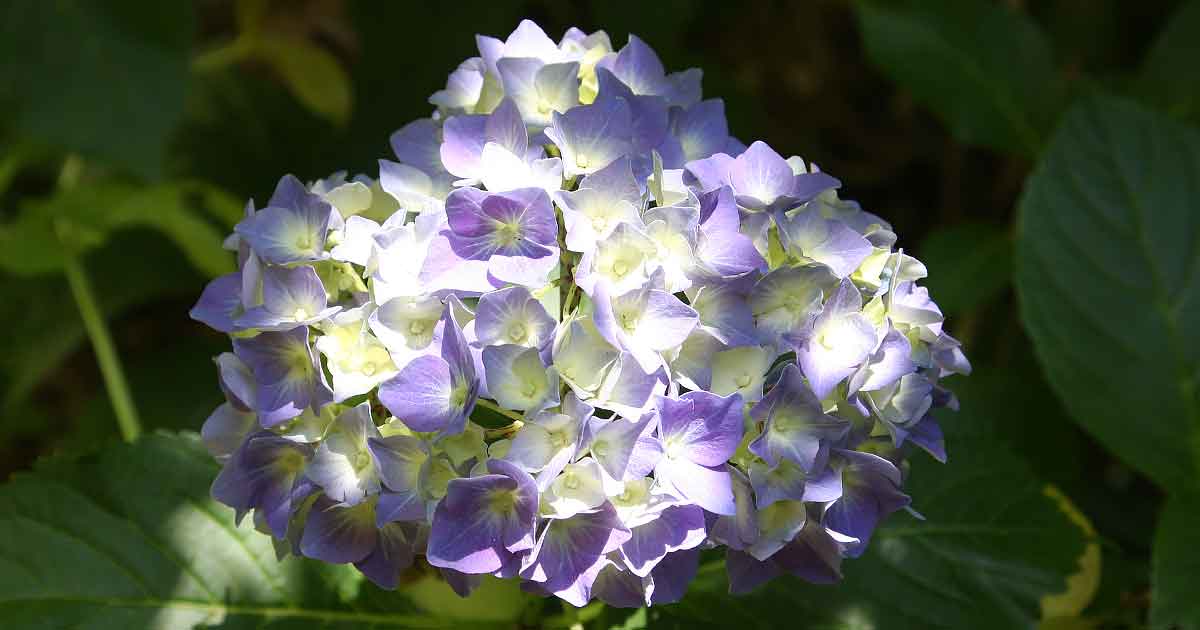
Hydrangea macrophylla comes from East Asia especially the island of Honshu in Japan, with large rounded flowers these are also where the ‘Lacecap’ varieties originate.
Commonly called the ‘Big Leaf’ Hydrangea, this is a deciduous shrub that will reach around 9ft (3m) in height. Pruning is easy and general care is also easy. With so many varieties and different flowers forms Hydrangea macrophylla is truely a versatile garden plant.
Hydrangea macrophylla Care
H.macrophylla will grow in USDA zones 6-9. The main difference is the amount of shade they need in each zone. They are best in part shade of dappled shade with some good morning sun.
Like most Hydrangea varieties, if they are allowed to dry out during the warmer months they will wilt, however they quickly bounce back with a deep watering.
- Choose a position with protection from the hot afternoon sun.
- A humus rich well drained soil is best.
- Soil pH will change the flower colour.
- Plant and water in well.
- Mulch around the plant to maintain a cool moist root run.
- Fertilize with a general purpose organic fertilizer in spring.
- The best time to prune is in late summer to early fall. (See Pruning Notes Below)
H. macrophylla Flower Colour
The colour of the flowers depends on the pH (acidity) of the soil.
In acidic soils pH 5 and less, the flowers will be in shaded of blue. In alkaline soils pH 7 or more they will be in shades of pink to red.
HOWEVER, this does not work for all Hydrangea, some of the white ones will always be white, and other may not change as much as desired.
For Blue Flowers
You can change the pH of your soil to get blue flowers, and the easiest way to make you soil more acidic is to apply a drench of aluminum sulphate. Best time to do this is in early spring.
For Red Flowers
If you want red flowers, then a cup of garden lime applied in spring and watered in will do the trick.
Try not to overdo the colour change thing, over application of lime OR aluminum sulphate can damage the soil and also interfere with the health of surrounding plants.
Pruning Macrophylla Hydrangeas
These are a plant that bloom on old wood, so prune them after flowering.
- Look down the stem for new buds and prune back to a pair of healthy buds.
- Cut out any dead or damaged wood, and remove any thin, weak or spindly growth.
- On mature plants remove 1 or 2 of the older stems every second year to reinvigorate the plant.
- You can prune back by 1/2 to 1/3 depending on the size you wish to keep the plant.
- Some of the smaller or ‘dwarf’ types require very little pruning at all.

